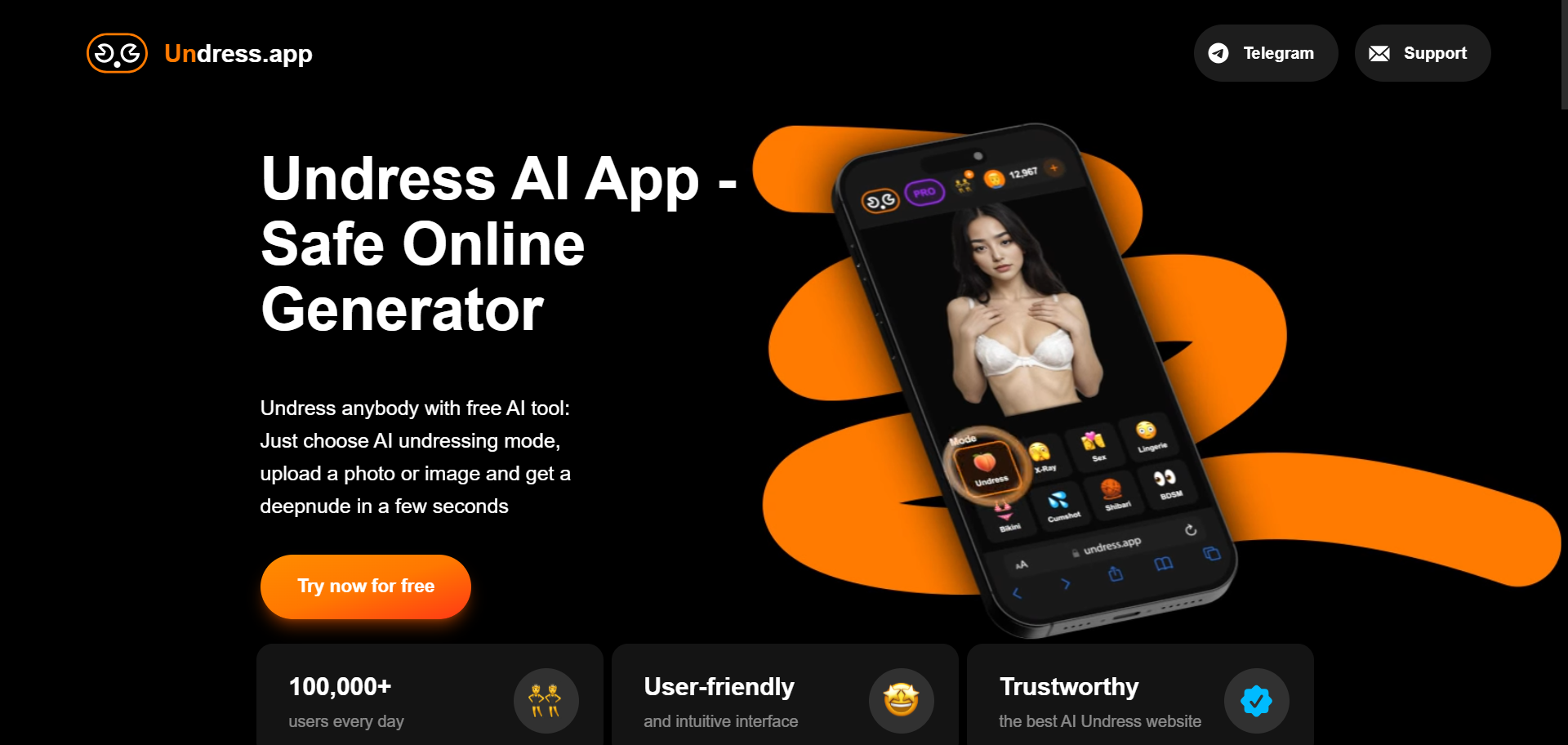Muke Ai Undress
⬇️⬇️⬇️TRY BEST AI UNSRESSER FOR FREE⬇️⬇️⬇️
Exploring Muke AI Undress: A New Era in Image Manipulation
The digital age has brought with it a wave of technological advancements, particularly in the field of artificial intelligence. One such innovation that has sparked both curiosity and controversy is Muke AI Undress — an AI-powered tool designed to digitally remove clothing from images of people. While this may sound like something out of a science fiction novel, it's becoming increasingly real thanks to the rapid development of deep learning algorithms.
In this article, we'll explore what Muke AI Undress is, how it works, its potential applications, and the ethical concerns surrounding its use. Whether you're a tech enthusiast or simply curious about AI developments, this guide will provide you with a comprehensive overview of this intriguing — and sometimes controversial — technology.
Try For Free
What Is Muke AI Undress?
Muke AI Undress is a software application powered by advanced machine learning models. It uses neural networks trained on vast datasets of human anatomy and clothing patterns to generate realistic images of individuals without their clothes. The system essentially "predicts" what a person might look like under their clothing and overlays that onto the original image.
While the name suggests undressing, it's important to note that the AI doesn't actually see through clothes. Instead, it generates a plausible representation based on statistical data and body modeling techniques. This means the results are not always accurate and can vary depending on the quality of the input image and the training data used.
Try For Free
How Does Muke AI Undress Work?
At its core, Muke AI Undress leverages convolutional neural networks (CNNs) and generative adversarial networks (GANs). These two technologies work together to analyze the structure of the input image, identify areas covered by clothing, and then synthesize new content to replace those areas.
Here’s a simplified breakdown of the process:
Image Analysis : The AI scans the uploaded photo to detect human figures and identify the boundaries of clothing.
Body Modeling : Based on learned body shapes and proportions, the system creates a base model of what the person might look like without clothes.
Texture Generation : Using GANs, the AI fills in the exposed skin areas with realistic textures, ensuring lighting, color, and perspective match the original image.
Final Output : The processed image is presented to the user as a digitally altered version of the original.
It’s worth emphasizing that the final result is a simulation — not a true representation of reality. However, for some users, the output can be startlingly convincing.
Try For Free
Potential Applications of Muke AI Undress
Despite its controversial nature, Muke AI Undress has found niche applications across various industries. Here are a few legitimate use cases where this technology could prove beneficial:
1. Fashion and Retail
In the fashion industry, virtual try-ons have become increasingly popular. Muke AI Undress could be integrated into online shopping platforms to allow customers to visualize how clothing would fit their body type without requiring a physical model. This could reduce return rates and improve customer satisfaction.
2. Art and Creative Expression
Some artists and designers use AI tools like Muke AI Undress to explore themes of identity, privacy, and the human form. In controlled environments, these tools can serve as creative instruments for generating conceptual artwork.
3. Medical and Anatomical Visualization
Medical professionals could potentially use similar AI technologies for educational purposes, such as visualizing musculoskeletal structures beneath clothing. While Muke AI Undress isn’t designed for medical use, its underlying principles could inspire more specialized tools in healthcare visualization.
Try For Free
Ethical Concerns and Legal Implications
With great power comes great responsibility — and nowhere is this truer than in the realm of AI image manipulation. Muke AI Undress raises several serious ethical and legal questions:
1. Consent and Privacy
Perhaps the most pressing issue is consent. Using someone’s image without permission to generate nude or semi-nude versions is a clear violation of privacy. Many countries have laws against non-consensual pornography (often referred to as "deepfake porn"), and tools like Muke AI Undress can easily fall into this category if misused.
2. Misuse and Harassment
There have been numerous reports of AI-generated nude images being used for harassment, blackmail, and revenge porn. Such abuse not only harms individuals but also undermines public trust in AI technology.
3. Legal Accountability
Determining who is responsible for AI-generated content — the developer, the user, or the platform hosting the tool — remains a gray area in many jurisdictions. As AI becomes more autonomous, lawmakers are struggling to keep up with regulations that protect individuals while allowing innovation to flourish.
Try For Free
The Future of Muke AI Undress and Similar Technologies
As AI continues to evolve, so too will tools like Muke AI Undress. We can expect future iterations to be even more realistic, faster, and easier to use. But with that progress comes the need for stronger safeguards and ethical guidelines.
Developers and companies working in this space must prioritize:
User authentication and verification
Strict usage policies
Content moderation and detection tools
Education and awareness campaigns
Moreover, collaboration between technologists, ethicists, and policymakers will be crucial in shaping a framework that balances innovation with respect for human dignity and rights.
Try For Free
Conclusion
Muke AI Undress represents both the incredible potential and the significant risks associated with modern AI. On one hand, it showcases the power of machine learning to manipulate images in ways previously thought impossible. On the other, it highlights the urgent need for ethical oversight and legal protections.
Whether you're intrigued by its capabilities or concerned about its misuse, one thing is certain: AI-driven image manipulation is here to stay. The challenge moving forward will be to harness this technology responsibly, ensuring it serves society rather than harms it.
If you’re interested in exploring how AI can transform digital imagery — safely and ethically — why not
Try For Free?
